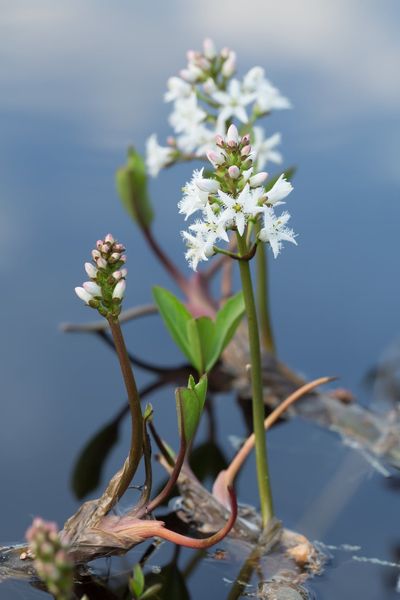What is a Bogbean?
A wildflower that needs excessive moisture to exist, you’ll find the bogbean plant (Menyanthes trifoliata) blooming in areas where most flowers would die from overly wet soil. It is an aquatic, rhizomatous perennial plant, returning year after year with white flowers that are enticingly beautiful. Look for it in its damp, native habitat near ponds, bogs, and woodland soil that remains moist from spring rainfall. It may also grow in shallow water. Much like a spring ephemeral, the bogbean flower blooms briefly with a group of eye-catching flowers atop a sturdy stem. Depending upon location and moisture, these plants may blossom for a short period during the spring season or in summer. Their striking flowers last only a few days. Also called buckbean, plants are 6 to 12 inches (15-31 cm.) in height. Purple-tinged, star-like, frilly blooms appear in clusters above three oval, shiny leaves. The leaves are near the ground and flowers of about the same height or slightly taller appear on stalks sprouting from the clump. Two types of flowers may appear, those with long stamens and short styles, or vice versa. Both are truly attractive when in bloom, however.
Bogbean Care
If you have a consistently wet area with acidic soil in sun or part shade conditions, you may wish to try growing bogbean plants there. You will likely have best results when ordering plants from an online nursery; don’t take plants from the wild. The shallow end of a water garden might be the perfect spot for this showy mid-spring specimen, or plant nearby in soil that remains moist. Growing from thick and woody rhizomes, bogbean spreads and multiplies. The only care necessary is providing a wet growing spot and keeping its spread under control.
Bogbean Uses
What is bogbean good for? Bogbean grows in many areas of the U.S. and throughout Europe. It produces seeds, called beans. The appearance is like a bean pod, containing the seeds. Uses for the plant are numerous for herbal supplements. Herbal type uses include those for loss of appetite, as the plant increases saliva flow. It may also be used for stomach issues. Leaves are reportedly good for achy joints from rheumatism, jaundice, and worms. Leaves of the bogbean are sometimes substituted for hops when making beer. The beans are ground and added to flour when making bread, although they are bitter. Always check with a medical professional before ingesting. Disclaimer: The content of this article is for educational and gardening purposes only. Before using or ingesting ANY herb or plant for medicinal purposes or otherwise, please consult a physician, medical herbalist, or other suitable professional for advice.
